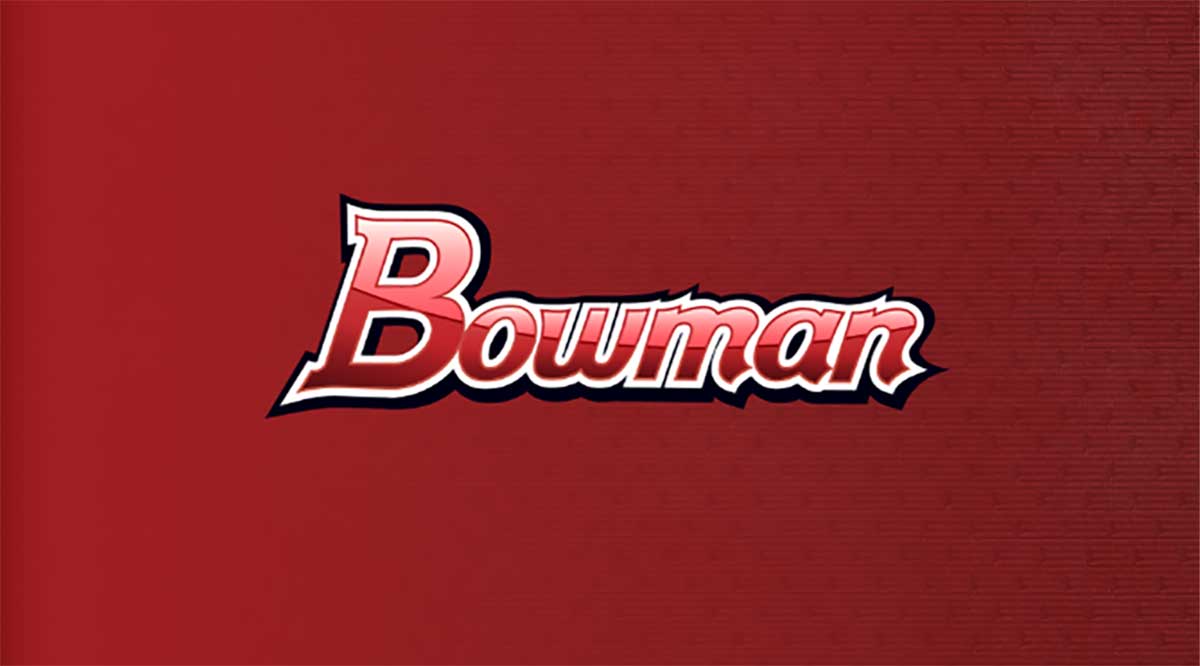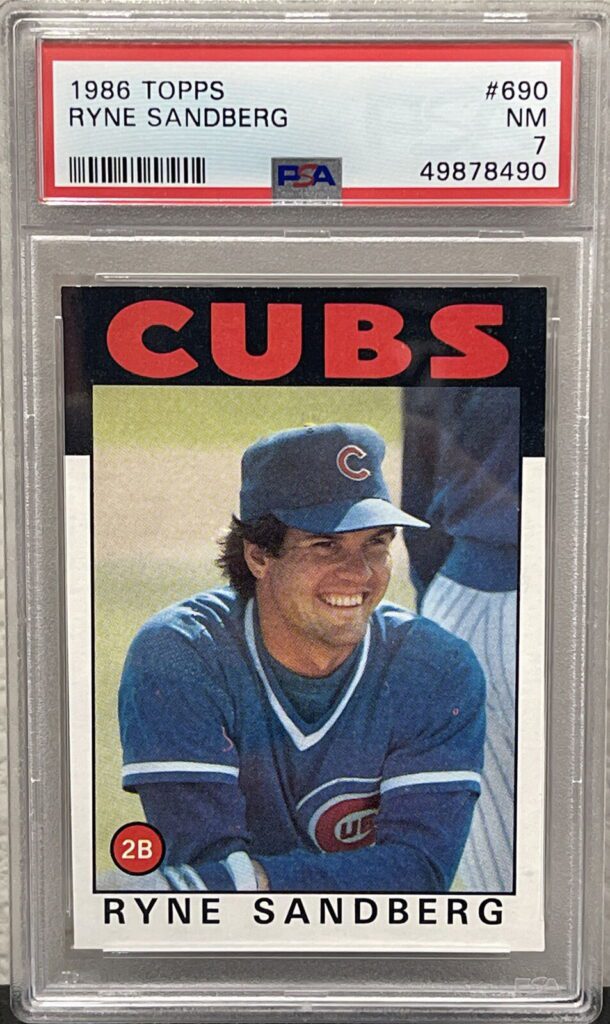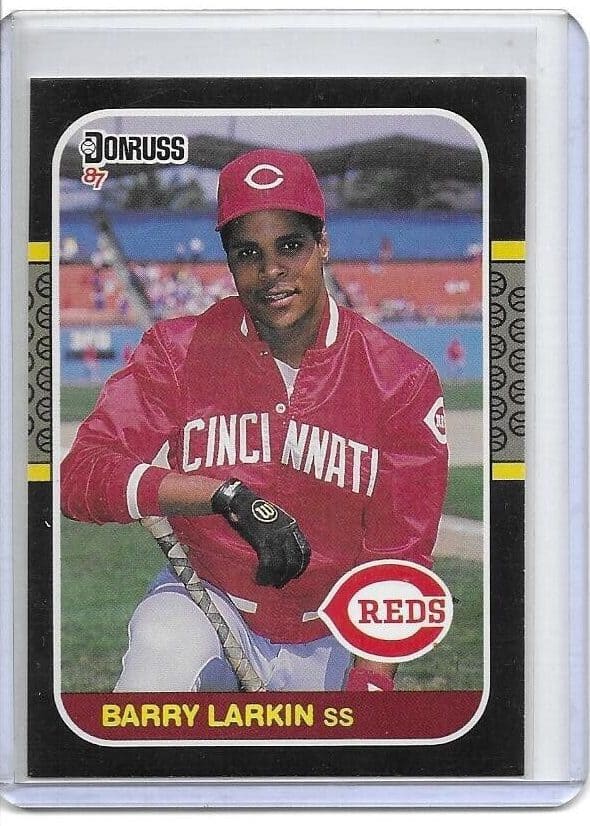-
 2021 Panini Prizm Baseball Cello Box
×
$69.991 × $69.99
2021 Panini Prizm Baseball Cello Box
×
$69.991 × $69.99


The name “junk wax era” doesn’t sound very promising. I mean, the word junk is right there in the title.
But it was a magical and innovative time in the hobby. Some of the coolest and best-loved sets were produced in this era, which according to most experts, spanned the years 1986-1993.
This period was indeed the good, the bad, and the ugly for baseball cards. Of course, everyone has a favorite, but we are here to end the controversy. Here are the best sets of the junk wax era.
The junk wax era is so named because it was a time of massive overprinting of cards. In the 1980s, every kid had heard horror stories from their parents. I heard them too. We were told how their parents had thrown out all of their priceless Mickey Mantle and Jackie Robinson cards.
You know, our grandparents. We heard them mutter, “I would be a millionaire if your grandma hadn’t done that.”
So, we thought to ourselves. I won’t make that same mistake. So, for dear life, we held on to our Jose Canseco and Daryl Strawberry cards. Many of us had entire binder pages full of the best rookies of that time. And so, the value of our cards is bent to the laws of supply and demand.
We all bought a ton of cards and kept them. The producers saw we were buying everything and happily overprinted everything. The end result? The vast majority of the 1980s and early 90s cards are essentially worthless.

So these cards aren’t where you go for those sweet, sweet hobby bucks. There are a few exceptions, but this isn’t where the money is. But despite this apparent lack of value, many collectors love these sets. But why?
It’s easy to dismiss everything from the junk wax era as garbage. But that doesn’t check out. For many of us, these cards are an inseparable part of our identity and childhood.
Furthermore, the aesthetics of the time were remarkable. Something about those 80s movies, TV, fashion, and music keeps us all coming back. It was a time of garish and outlandish cultural optimism.
The baseball cards of that era reflect the attractive culture of the 80s perfectly. They are an integral part of the American story and of the hobby as well. You can call it junk all you want, but for those of us who were around in the 80s, those cards will forever evoke a range of bitter-sweet memories.
But there are so many sets from this era. You see, the 1980s and early 1990s were a wild west time for card producers. Back then, you didn’t have these one-company monopolies. Topps, Fleer, and Donruss were the big guys. Then, Upper Deck came through in 1989 with some revolutionary releases. And there were plenty of more minor releases as well.
With so many producers and sets to choose from, separating the wheat from the chaff is hard. But we have done it for you to the best of our ability. What guided me here wasn’t primarily value.
Sure, I looked to see how much these sets fetch, and I will give you those numbers. But I assume that junk wax lovers are not looking for a quick bang for their buck.
Both ultra-modern and vintage have the 80s stuff beat in that regard. Instead, they are looking for cultural importance and the inimitable style of the period. The best sets of the junk wax era include all of these qualities.
A seemingly innocuous 660-card release, this one contains hidden depths and wonders. Unfortunately, in 1989 Fleer had one of those designs that are so needlessly atrocious that it becomes iconic through its sheer ugliness.
The background for the cards looks like the placemat they would put on the kiddie table on Thanksgiving circa 1985. That may not sound good to everyone, but to hardcore junk wax fans, that is a significant selling point.
Shop for 1989 Fleer cards on eBay
The design wasn’t the only thing about these cards that seemed rushed and somewhat ill-advised. However, what really makes 1989 Fleer Baseball stand out, is the many errors and problems with production.
In particular, the Billy Ripken card lives in infamy as the “fuck face card.” It is so-called because, on Ripken’s bat, one can clearly see the offending term written. Obviously, that was embarrassing for Fleer.
But it delighted children around the country, who now got to combine their two favorite things: baseball and curse words. Unfortunately, Fleer then had to cover up the offending words and did so in two different ways. One “fixed” card had a black box over the “fuck face” inscription, while the other put a black squiggle over it.
A similar lack of oversight has made the Randy Johnson 1989 Fleer rookie card his most legendary one. The original card showed the gigantic future Hall-of-Famer with a Marlboro sign in the background.
Unfortunately, Fleer executives either missed it or thought nothing was wrong with marketing cigarettes to children. Either way, the card had to be reprinted with the background blacked out.
However, Fleer botched the cover-up, and in some of the later cards, you can still see the Marlboro logo if you look hard. And thus, a fatal blow to child smoking was struck. If so, through a simple lack of quality control and oversight, 1989 Fleer has become a raving classic.
Those two cards have such an incredible backstory that they overshadow a legit Ken Griffey Jr. rookie card, which is also included in this set.

A beautiful set, which doesn’t look like any other you have seen. The photographers got intimate portraits of the players, revealing a good deal of humor and personality. Their visages were placed on the background of oversized team logos.
Usually, caps or jerseys are made abnormally large. It sounds weird, but it definitely works. In fact, it is so aesthetically pleasing that I almost left it out. After all, the junk wax era is all about the ugly and garish. Yet, this is somehow artistic and balanced.
It is also a smaller set than most, standing at 220 cards. So, it’s quite easy for set completion freaks to pursue as well. To top it off, the bios for each player were (for a change) well-written and concise, and the cards had state-of-the-art holograms.
The checklist focused on established stars. So, there are barely any rookies and the ones included aren’t great. For example, Mike Lansing was mentioned in the George Mitchell report on illegal steroids and performance-enhancing drugs. But that is not quite the highlight you want in your career.
So, it’s the inserts of the Hall-of-Famers that people really like. In particular, the autos are an excellent find.
Shop for 1993 Studio cards on eBay
Here are the key cards in the set:

The wax era began in 1986, and this set is one of the ones that launched this cheesy era of low-valued cards. It featured a 660-card checklist.
But, as usual for Donruss, the highlight was the 26 hand-painted Diamond Kings cards. Donruss issued one for each franchise. And, of course, the packs came with three Hank Aaron puzzle pieces that came in each pack. A classic in junk wax card marketing strategies.
The other highlight of the set was the rated rookies. Of course, they are a standard for basketball and football today, but it’s nice to remember how they started their journey on the diamond.
But what I most love about this set is the design. I am not sure what Donruss was thinking when they put together that blue background with the black pinstripes. It looks like what would happen when your Atari froze up after an intense Space Invaders game.
The images also have a diagonal top and bottom, complete with a nameplate beneath the photo. The design is unattractively iconic, like so much of 1980s imagery.
Shop for 1986 Donruss cards on eBay
The guy everyone was chasing at the time was five-tool rookie Jose Canseco. While he didn’t turn into the next Willie Mays as some had hoped, the outfielder remains one of the most iconic players of the 1980s.
Here are the key cards in the set:

The 1986 Topps release has one of their most striking designs of the decade. Indeed, it has often been reprised by the company in various inserts, Heritage releases, and other nostalgic reboots. It’s easy to see why. The white borders switch to black at the top of each card, creating a well-thought-out contrast.
The team’s name at the top is color coded, and the position appears in a little circle at the bottom left corner. It’s not quite like any other design, and it works. Just a bit tacky, but it’s the 80s, and that was mandatory. Well done, Topps.
Shop for 1986 Topps cards on eBay
The design was stellar and representative of 1980s card designs, for better or worse. However, the weak point of this set was the rookie class. It wasn’t the best in a decade loaded with young talent. But because the set is quite iconic, some key veteran cards can be worth a good amount if they are PSA 10 or 9.
But if you include the Topps Traded set, you get one fabulous rookie. Yes, the earliest Barry Bonds card can be found in that set. So, let’s include it. After all, the Traded cards did have that awesome design.

The inaugural release of a series that has lasted until the present day, the 1991 Stadium Club cards, was a landmark for the hobby. Everyone was expecting a Topps counter to the sensational early Upper Deck releases. But knockoffs usually fall flat. This one was a completely different take on glossy, high-end baseball cards.
The set was a bit smaller than usual. It included two 300-card series, the stage for an overall checklist of 600 cards. The release was quite innovative, featuring cards with no borders, accentuating the photography as much as possible.
The beautiful images were obtained through a partnership with Kodak, which at that time was at the forefront of photography. Did I say no borders? However, it did have this bit of gold trim at the bottom to show you this is a “classy” release. Gotta love that junk wax aesthetic.
And you have to give Topps credit. They selected top-notch footage for this release, particularly for the biggest stars. Even the card back was well executed. It included a baseball field and a photo of the player’s first Topps card. Another delicate touch in a basically flawless concept. These cards were so impressive that despite a relatively hefty price tag, they were a big hit.
Shop for 1991 Stadium Club cards on eBay
Unfortunately, the 1991 rookie class wasn’t top-notch. Therefore, the card everyone remembers most from this release is the Ken Griffey Jr. There is a Jeff Bagwell rookie card in there, although it only garners $50 as a PSA 10.

1987 was a good year for baseball cards. But the Donruss set stands out from the pack (get it, pack?). The design is one of my absolute 1980s favorites and has never been successfully duplicated.
It features beautiful black borders and stripes with little baseballs surrounding the images. It somehow manages to be both 1980s tacky and kinda classy all at once.
The cards in this release were notoriously difficult to maintain in good condition. Therefore, getting your hands on a high-graded version of one of the top rookies can make some good money.
Shop for 1987 Donruss cards on eBay
The 1987 rookie list was also particularly strong, which is the primary standard for the longevity of a set. It doesn’t get much more substantial than Greg Maddux, Bo Jackson, Barry Bonds, and Mark McGwire.
Of course, legends like Barry Larkin and Rafael Palmeiro would top other years’ rookie lists, but in 1987 they appeared as a mere afterthought.
Here are the key cards in the set:
A special mention goes to the Eric Davis Diamond King error card. The first printing of the set included a Davis card without the yellow stripe that every standard Diamond King card had over the inserted logo.
It was later corrected, making the error card rare and worthwhile. But what really set this apart was the inclusion of the Premier Prospects series.

SP was an Upper Deck brand aimed at capturing the high-end market. Or, to be more precise, it was meant to create one. It was a small set with a 290-card checklist.
The design was sparse and fitted in with that Upper Deck or Stadium Club style that was coming to the fore at the time. However, I could do without the partially striped borders on the left side. But what really set this apart was the inclusion of the Premier Prospects series.
Shop for 1993 Upper Deck SP cards on eBay
There are quite a few cool cards in this set. But we all know why we are gathered here. The Derek Jeter Premier Prospects rookie card is one of the most iconic and beloved cards of the 1990s.
It is absolutely essential for serious Jeter and general rookie card collectors. The series also has other well-regarded cards, including the Johnny Damon rookie card. Some people treat the Chipper Jones and Manny Ramirez Premier Prospect cards as rookies, but they ain’t.
Here are the key cards in the set:

When I think of junk wax, the first cards that come to mind are those wood-grain borders that look like the countertop for a particularly bad truck stop diner. Nameplates in the team colors offset this “classy” touch.
And for an 80s set, the pictures were fabulous, and the centering was remarkably good. This set captured that 80s feel perfectly and remains a gem.
The set also had the best “future stars” inserts and those great trivia questions on the back. And like all the other 1987 releases, 1987 Topps enjoyed that premium rookie class.
While this set was overprinted and worth very little, it is an utterly iconic representation of what junk wax is all about. But if you want to get any value out of this set, the Tiffany cards are a bit more scarce and get a better price on the open market.
Shop for 1987 Topps cards on eBay
We already know that the 1987 rookie list is as strong as they come. And the 1987 Topps release made the most of that. The Barry Bonds card really stands out as the preferred rookie for a guy who may or may not (depending on how you feel about certain substances) is the most outstanding offensive player in baseball history.
Moreover, the card shows the young Bonds before (allegedly) having his body entirely transformed by performance-enhancing drugs.
Here are the key cards in the set:

The 1992 Bowman release was the beginning of our obsession with Bowman prospects. The classic Bowman cards were discontinued in 1956 after Topps purchased the company. Although Bowman was rereleased in 1989, it had undergone growing pains, and those early cards were awkward and difficult to find.
Collectors were also unhappy with the large size of the cards, a tribute to the earlier Bowman releases. So they tinkered with the formula. Cutting the size back to 2-1/2″ x 3-1/2″ in 1990.
The 1992 version cards also came with a new look. They replaced the brown cardstock with the kind of premium white medium that Upper Deck had popularized in 1989.
But more importantly, the 1992 iteration finally saw Topps find the right niche for this release: the rookie’s home. It included a more comprehensive range of rookies than any other release and featured a strong crop of prospects.
That would become the calling card for the Bowman series and remains so to this day. So, in 1992 Bowman stood as a remarkable bridge between the junk wax era and the ultra-modern hobby world.
Shop for 1992 Bowman cards on eBay
Far and away, the most important card in the set is the Mariano Rivera rookie. There is something remarkable about how harmless and preppy the young pitcher looks. Especially when we know the kind of beast he would become.
But it’s not the only one, with Trevor Hoffman, Pedro Martinez, and Mike Piazza rookies available as well. The Piazza card is a great testament to the incredible road the catcher had traveled from his 62nd-round selection in the 1988 draft to the brink of stardom.
Here are the key cards in the set:

There is no getting around the importance of this set. The 800-card set was released in two parts. The first series included the first 700 cards and came out in April 1989.
The High-Number Series, which included both the first 700 cards and an additional 100 cards, came out later in the year.
First, it changed the aesthetics of baseball cards in an enduring manner. It had a sharp design featuring a side baseline and those famous white borders. It also had several other new concepts that would soon become standard.
The glossy card stock was a significant improvement over the standard cardboard. It had some of the best inserts ever seen, holograms to protect against forgeries. Notably, it didn’t have a wax wrapper but featured a foil wrapper.
So, is it really a junk wax release? That is one of those “what is the sound of one hand clapping” kind of questions.
But the incredible photo quality made Upper Deck’s first set stand out. The hobby was never the same after this one, so this deserves a high spot on the grounds of importance alone.
Personally, I am not the biggest fan in the world. The white design may have seemed clean and inspired at the time, but now it seems somewhat lacking in luster. More unforgivable, it doesn’t have that 1980s flair I look for in junk wax sets.
Another problem with this set is that it was ridiculously overprinted. Initially, no less than 1,000,000 cards for each player were planned. But that was definitely expanded and perhaps even doubled due to the release’s success.
Aside from the importance of the set from a conceptual vantage point, Upper Deck also lucked out with their rookies. Of course, the set most notably included the iconic Ken Griffey Jr. rookie.
The fresh design, as seen on the card of the future rookie, made this the most graded (deeply over-graded, really) and sought-after card of the 1980s. But that isn’t the only awesome card in that set.
Here are the key cards in the set:

For so many of us, myself included, these cards are where it all started. The best sets from this era are a reminder of just how awesome this time was for baseball cards.
Sure, the value isn’t setting any records. But with so much interest in the hobby and all of those companies fighting for supremacy, it was a time of incredible innovation. Of course, all this quality and innovation was served with a healthy helping of 80s aesthetics.
If you look at the sets included in this list, you can see how each one contributed to the emergence of the modern hobby. Some brought high-quality photography, others the inserts and autos.
Bowman became the series we know and love, and the high-end cards emerged as well. Furthermore, the rookies that came of age in this period are some of the finest the game has ever known. If you are a pitching fan, you have Randy Johnson and Greg Maddux. It doesn’t get much better for hitters than Barry Bonds and Derek Jeter.
No one is making a fortune off 1980s baseball cards — for the simple reason that everyone was told you could make a fortune off them. But these cards continue to be beloved and widely sought after.
Panini Downtown Guide! Plus an update on the health of the hobby.

32 Spot Random Team 2024 NFL Mosaic Mega 8 Box Break

32 Spot Random Team 2024 NFL Mosaic Blaster 10 Box Break.

Sealed Blaster Box of 2022 Topps MLB Baseball Update Series.

Sealed box of 2019 Topps MLB Baseball Series 2 Hobby Box. 1 autograph or relic card guaranteed. Great rookie class.

Sealed Box of 2021 Panini Prizm Baseball Cello. 12 packs per box, 18 cards per pack.

© Copyright 2025 - All rights reserved Cardlines.com / Media Techs LLC - Sports Card News, Reviews, Releases and BREAKS - #thehobby.
Important: When you click on links to various merchants on this site and make a purchase, this can result in this site earning a commission. Affiliate programs and affiliations include, but are not limited to, the eBay Partner Network.